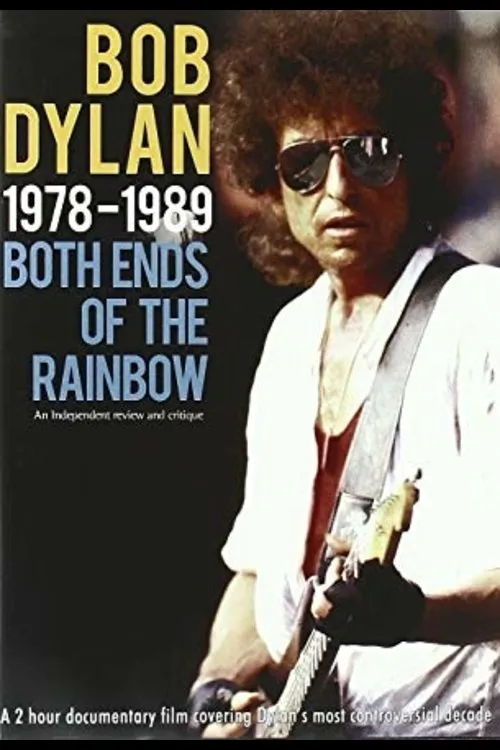Bob Dylan: 1978-1989 - Both Ends of the Rainbow

Plot
In the latter half of 1978, Bob Dylan began exploring a new, deeply personal aspect of his creative vision that would shake his fans and the music world at large. It was a transformation that signaled a radical departure from the counterculture anthems that had come to define his early work, and instead, led him down a path of introspection and spiritual exploration. This pivotal period in Dylan's career, spanning nearly a decade, forms the core of the documentary "Both Ends of the Rainbow: Bob Dylan 1978-1989," a deeply compelling and revealing examination of an artist at the crossroads. As Dylan navigated the aftermath of the tumultuous 1970s, he began to grapple with a newfound sense of spiritual disillusionment. Gone were the days of psychedelic experimentation and free-spirited idealism; in their stead, Dylan found himself drawn to the certainties of Christian fundamentalism. It was an unexpected turn for an artist who had long been synonymous with rebellion and nonconformity. The documentary weaves a fascinating narrative of Dylan's spiritual evolution during this period, tracing the threads of his growing fascination with evangelical Christianity. Rare and intimate footage offers a glimpse into the private world of the artist, showcasing candid moments of introspection and contemplation. We see Dylan grappling with the fundamentalist faith, seeking solace in its dogmatic certainties and wrestling with the contradictions that arose from his previous, more free-wheeling perspective. As Dylan delves deeper into Christian fundamentalism, his music undergoes a corresponding shift. Gone are the poetic, open-ended lyrics that had come to define his oeuvre; in their place, the artist begins to produce work that is often characterized by its strict, didactic nature. Albums like "Slow Train Coming" (1979) and "Saved" (1980) are testaments to Dylan's newfound spiritual fervor, featuring a distinctive blend of country-infused rock and straightforward, sermon-like songwriting. Despite the controversy that surrounds this period in Dylan's career, the documentary also highlights the artist's unwavering commitment to his craft. Even as he grapples with his spiritual evolution, Dylan continues to write from the heart, pouring his emotions and convictions into songs that are, by turns, passionate, introspective, and sometimes even provocative. From the opening strains of "Gotta Serve Somebody" (the lead single from "Slow Train Coming") to the poignant, gospel-infused "Every Grain of Sand" (from 1980's "Saved"), Dylan's music remains a constant thread throughout, weaving its own narrative of transformation and spiritual searching. However, by the mid-1980s, it becomes clear that Dylan's Christian fundamentalist phase is starting to wane. As the decade progresses, he begins to reconnect with the secular world, drawing upon experiences and emotions that lie beyond the strictures of his previous, more didactic songwriting style. The release of 1989's "Oh Mercy," often cited as a return to form, marks the culmination of Dylan's spiritual journey. With its rich, atmospheric soundscapes and poetic, enigmatic lyrics, the album serves as a fitting coda to this transformative chapter in the artist's life. Throughout "Both Ends of the Rainbow," the documentary skillfully juxtaposes rare footage of Dylan's live performances with studio versions of his pivotal songs, creating a nuanced portrait of the artist in all his complexity. We see Dylan at various stages of his evolution, from the charismatic, stage-forged preacher of the early 1980s to the more contemplative, introspective figure who emerges on "Oh Mercy." It is a remarkable documentary, one that sheds new light on an often misunderstood period in Dylan's career, and underscores the artist's unwavering commitment to his craft, no matter where life may lead.
Reviews
Recommendations


